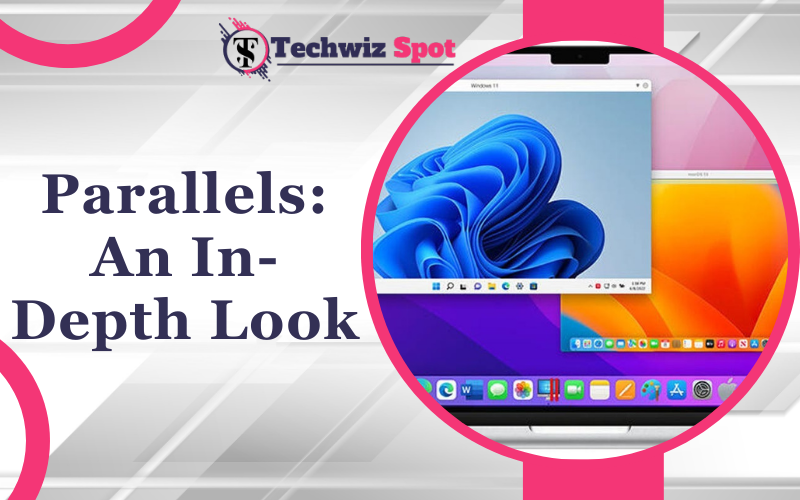Parallels is a popular virtualization software. It allows you to run different operating systems on your computer without needing to reboot. The most common use of Parallels is running Windows on a Mac. This software makes it possible to use both macOS and Windows at the same time. It is particularly useful for users who need access to applications that are exclusive to Windows.
What Is Parallels?
Parallels is a virtualization software created by Parallels, Inc. It helps users run multiple operating systems on the same machine. You can run Windows, Linux, and even older versions of macOS alongside your current macOS. With this software, you do not have to restart your machine to switch between operating systems.
This software is well-known for its seamless integration between macOS and Windows. It gives users the flexibility to use Windows apps as if they were native Mac apps. It also supports the drag-and-drop feature between operating systems, making it easier to work across platforms.
Why Use Parallels?
Many people use Parallels for various reasons. One of the main reasons is the need to run Windows-only software on a Mac. Parallels allows users to install and use Windows applications while still enjoying the benefits of macOS. This is particularly helpful for professionals who use specialized software that is only available for Windows.
Additionally, gamers use Parallels to run Windows-exclusive games on their Macs. Some games are not developed for macOS, and with Parallels, gamers can still enjoy them.
Developers also find Parallels useful. They can test applications on different operating systems without needing separate machines. Parallels provides a solution for creating virtual environments to test software, making it a cost-effective option for developers.
How Does Parallels Work?
Parallels works by creating a virtual machine (VM) on your computer. A virtual machine is like a computer within your computer. It uses the hardware of your main machine but runs a different operating system inside the VM.
When you install Parallels, you create a virtual machine for Windows, Linux, or another operating system. Once the VM is set up, you can install software, games, or any programs just like you would on a normal computer. The great thing is that you do not need to reboot your computer to switch between operating systems. Both can run at the same time, and you can easily move between them.
Parallels Features
Parallels offers a range of features designed to enhance the user experience. Some of the key features include:
- Coherence Mode: This mode allows you to run Windows applications as if they were macOS applications. The Windows interface disappears, and only the application window appears on your screen. You can also switch back to the full Windows interface at any time.
- Touch Bar Support: For Mac users with a Touch Bar, Parallels integrates Windows apps into the Touch Bar. This means you can customize the Touch Bar for each Windows application, making it easier to work.
- Drag and Drop: One of the best features of Parallels is its ability to drag and drop files between macOS and Windows. This feature makes it very convenient to transfer files between the two systems without needing extra steps.
- Shared Folders and Cloud Services: Parallels lets you share folders between macOS and Windows. It also supports cloud services like Dropbox, Google Drive, and OneDrive. This way, you can easily access your cloud storage from both operating systems.
- Performance: Parallels is known for its speed and performance. It optimizes the resources of your Mac to ensure that both operating systems run smoothly without slowing down your machine.
- Support for Different OS Versions: Parallels supports a wide range of Windows versions, from Windows XP to Windows 11. It also supports various Linux distributions and older macOS versions.
Parallels for Gaming
Parallels is not only useful for professional work; it also has applications in gaming. Mac users often struggle with gaming because many popular games are developed only for Windows. With Parallels, you can play Windows games on your Mac without rebooting. The software provides good performance for most games, though it may not handle the most graphics-heavy games as well as a dedicated Windows machine.
Parallels has made improvements in handling DirectX and OpenGL, which are important for gaming. However, it is important to remember that performance can vary depending on your Mac’s hardware. Macs with better processors and more RAM will provide a smoother gaming experience in Parallels.
Parallels Desktop Editions
Parallels comes in several different editions to meet the needs of various users. These editions include:
- Parallels Desktop Standard Edition: This is the most basic version and is suitable for home users. It includes all the essential features needed to run Windows on a Mac and supports up to 8 GB of virtual RAM and 4 virtual CPUs.
- Parallels Desktop Pro Edition: This edition is aimed at developers and power users. It supports up to 128 GB of virtual RAM and 32 virtual CPUs. The Pro edition also includes additional tools for software development and testing.
- Parallels Desktop Business Edition: This version is designed for companies. It offers centralized administration and mass deployment features, making it easier for businesses to manage Parallels installations across many machines.
Installation and Setup
Setting up Parallels is quite simple. You need to download the Parallels installer from the official website. Once you have downloaded it, follow the step-by-step instructions to install the software on your Mac.
After installing Parallels, you will need to create a virtual machine. You can either install a new copy of Windows or transfer an existing one. Parallels also allows you to download Windows directly from Microsoft during the setup process. Once the virtual machine is created, you can start using it immediately.
Licensing and Pricing
Parallels offers a few different licensing options. You can purchase a one-time license for the Standard Edition. For the Pro and Business Editions, you need to subscribe to a yearly plan. Parallels often runs promotions, so you might be able to find a discounted price.
Here are the current prices:
- Parallels Desktop Standard Edition: $99.99 for a one-time purchase.
- Parallels Desktop Pro Edition: $99.99 per year.
- Parallels Desktop Business Edition: $119.99 per year.
Parallels also offers a 14-day free trial, so you can test the software before deciding to buy.
Alternatives to Parallels
While Parallels is one of the most popular virtualization tools for Mac users, there are alternatives. Some of these alternatives include:
- VMware Fusion: Another popular virtualization tool for Mac. It offers similar features to Parallels and is also commonly used to run Windows on macOS.
- VirtualBox: A free and open-source virtualization software. While not as feature-rich as Parallels, it is a good option for users looking for a cost-free solution.
- Boot Camp: Apple’s own solution for running Windows on a Mac. Unlike Parallels, Boot Camp requires you to restart your Mac to switch between macOS and Windows.
Conclusion
Parallels is an excellent tool for anyone who needs to run multiple operating systems on a single machine. Whether you are a professional using Windows software, a gamer, or a developer, Parallels provides a flexible and user-friendly solution. Its seamless integration between macOS and Windows makes it one of the best virtualization options on the market today.
With its wide range of features, easy setup, and good performance, Parallels continues to be the top choice for Mac users who need access to different operating systems.



